Philips PML8709 is a model that stands out in the offering of the Chinese-Dutch manufacturer due to its uniqueness. Instead of the classic Philips operating system - TitanOS, we find the well-known Google TV, which provides extensive personalisation options and access to a vast library of apps. This is a television that, on one hand, entices with very good contrast, and on the other – surprises with several unusual design decisions. In terms of picture quality, the PML8709 offers excellent contrast, which combined with wide colour gamut coverage ensures great colour reproduction – especially after calibration. Despite having a 60 Hz panel, the television performs well in occasional gaming thanks to support for features such as ALLM, VRR, and a low input lag of around 13 ms. On the flip side, Philips has deprived this model of one of the biggest advantages of its TVs – the Ambilight system. This is a surprising move that may disappoint many brand fans. Another weak point is HDR performance – despite promising contrast results, the television performs averagely in this category. Average brightness and issues with detail in brighter scenes give the impression that something has clearly gone wrong in the implementation of this feature. Philips PML8709 is a television full of contrasts. On one hand, it offers solid black quality and interesting solutions for gamers, while on the other – some limitations, such as the absence of Ambilight or average brightness, mean that it is not a model without flaws. It is a good choice for those who appreciate the versatility of Google TV and are looking for a television for everyday use.
- Matching (Score)
- Our verdict
- TV appearance
- Where to buy
- Contrast and black detail
- HDR effect quality
- Factory color reproduction
- Color reproduction after calibration
- Smoothness of tonal transitions
- Image scaling and smoothness of tonal transitions
- Blur and motion smoothness
- Console compatibility and gaming features
- Input lag
- Compatibility with PC
- Viewing angles
- TV efficiency during daytime
- Details about the matrix
- TV features
- Apps
- Playing files from USB
- Sound
Philips PML8709 vs PHILPS PUS9060
Direct compare
The One 2025 / PUS9060 / PUS9000

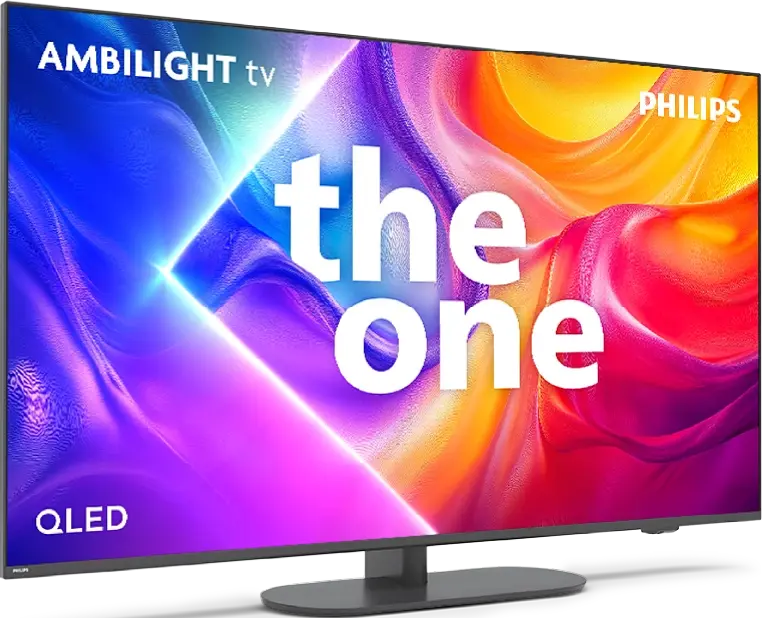
Panel type: LCD VA
Resolution: 3840x2160
System: Google TV
Model year: 2024
Complete the survey to find out the result

Panel type: LCD VA
Resolution: 3840x2160
System: Titan OS
Model year: 2025
Complete the survey to find out the result

Overall rating
6.1
6.8
Movies and series in UHD quality
6.3
6.7
Classic TV, YouTube
6.6
6.5
Sports broadcasts (TV and apps)
5.6
6.6
Gaming on console
7.2
8.4
TV as a computer monitor
3.5
8.8
Watching in bright light
4.8
6.0
Utility functions
6.5
5.9
Apps
9.6
6.2
Sound quality
5.1
6.6
Complete the survey to find out what fits your preferences
Advantages
Google TV operating system – intuitive and versatile
Very good contrast
Very good coverage of the DCI-P3 and BT.2020 colour gamut
Low input lag - around 13 ms
Support for ALLM, VRR and HGiG in gaming mode
VA panel with very good native contrast
Ambilight TV system that enhances perceived contrast
Support for dynamic HDR formats: Dolby Vision and HDR10+
Great for gamers: Supports 4K 120/144 Hz, VRR, ALLM, HGiG, G-Sync Compatible
Low input lag
Very good compatibility with PC
Supports multiple audio formats - Dolby Atmos and DTS
Backlit remote with numeric keypad
Disadvantages
The quality of the HDR effect leaves a big sour taste
No Dolby Vision
Not suitable for PC work
No Ambilight system
The Titan OS operating system can be underdeveloped
Limited number of applications
Average viewing angles
Lack of TV functions (USB recording, PIP, Audio only mode)
Infrared remote (must aim at the screen)
Our verdict
Philips PUS9000 is proof that the manufacturer not only keeps a finger on the pulse but also carefully listens to its users. In the latest version of this popular series, there is a clear progression – especially in comparison to the previous generation that we had the opportunity to test. The use of a VA panel has brought noticeable improvement in blacks, which finally presents itself at a decent level. Brightness reaching 500 nits does not disappoint even in sunny rooms, and support for a wide range of HDR formats – including Dolby Vision and HDR10+ – completes the image of a well-prepared piece of equipment. Additionally, the support for spatial sound technologies like Dolby Atmos and DTS only enhances the positive impression, especially since the presence of all the aforementioned formats is not a given even in the most expensive models from 2025. But what really sets this model apart from the competition is the Ambilight system. The multicoloured backlighting not only makes a visual impression – in a darkened room, it can improve the perceived contrast and completely transform the viewing experience of a movie or series. The gaming mode also deserves recognition. 144 Hz, low input lag, variable refresh rate, G-Sync compatibility, and Game Bar functionality – everything you could expect from equipment designed with consoles and PCs in mind. Unfortunately, not everything works perfectly. The Titan OS system, while operating relatively smoothly, still suffers from shortcomings – many popular apps are missing, minor bugs occur, and the overall experience can be somewhat clunky in daily use. Additionally, the remote, despite its modern appearance, still uses infrared and requires pointing at the TV. Such a shame.
So, who is the PUS9060 for? For those who want to immerse themselves in an evening screening with impressive Ambilight, play on consoles, and stream content from external devices. In this scenario, “The One” could indeed turn out to be “the one and only” – especially given that its price is not off-putting on release day.
TV appearance





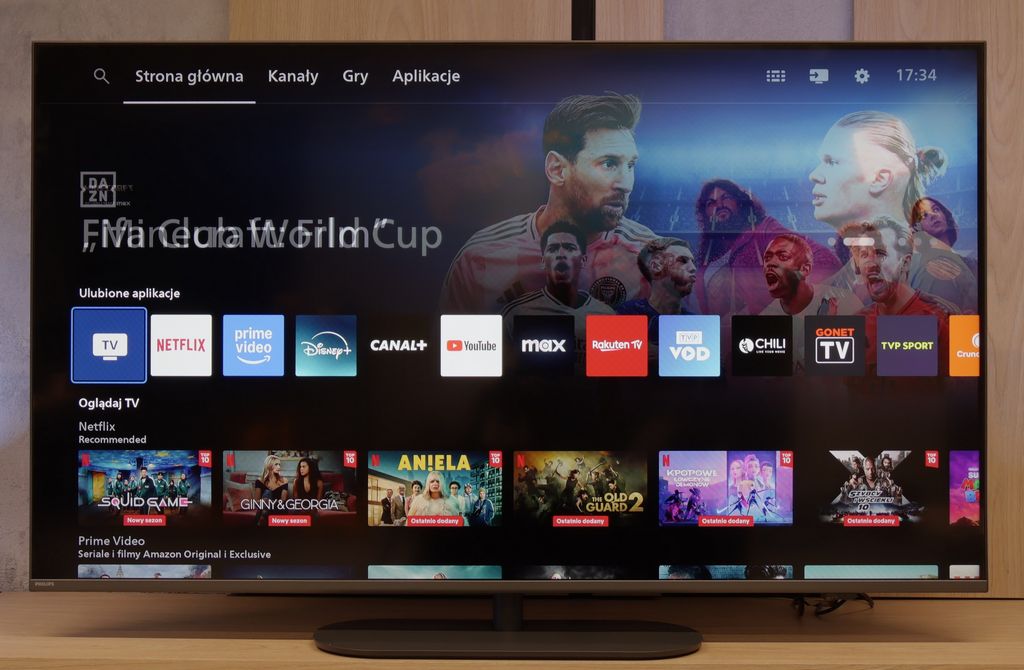

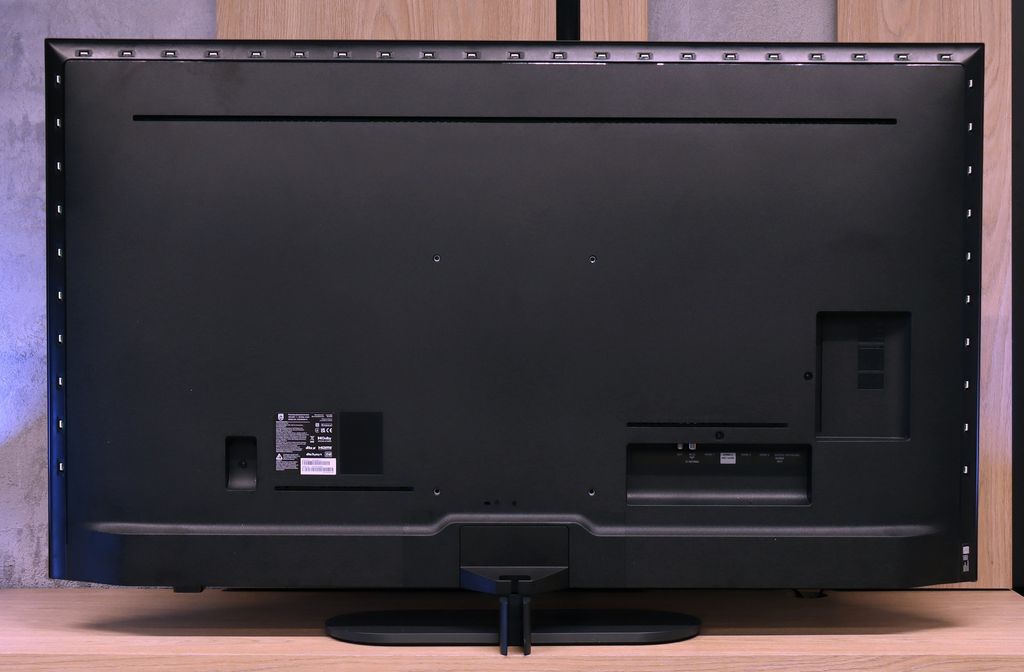
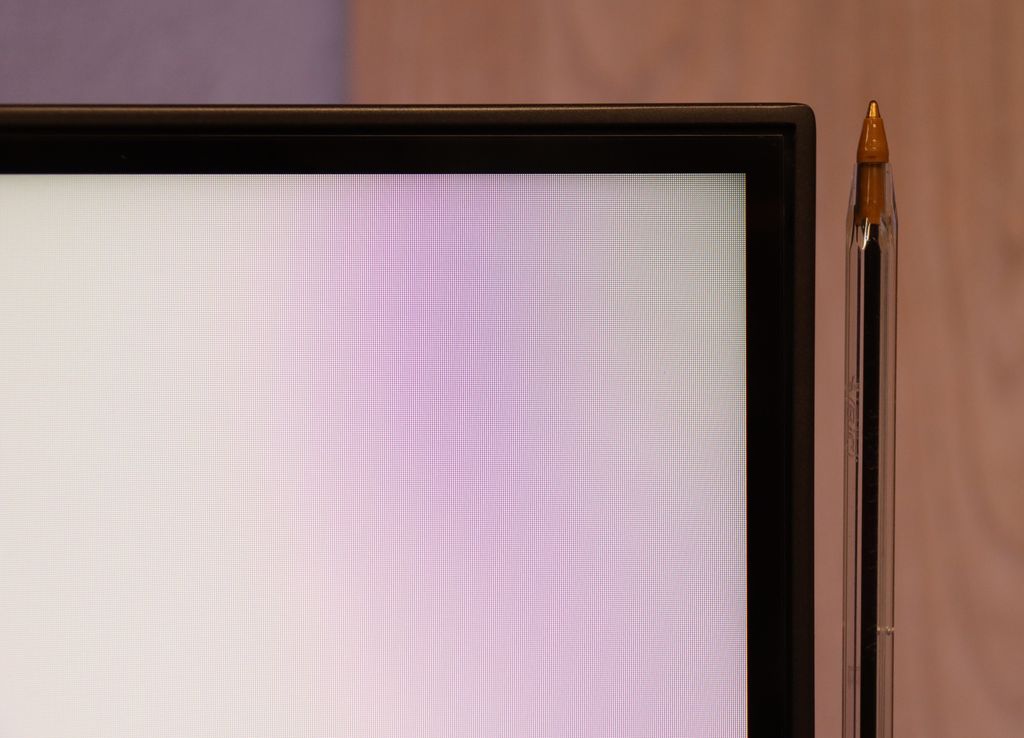
Contrast and black detail
7/10
6.2/10
Local dimming function: Yes, number of zones: 96 (16 x 6)
Local dimming function: No
Contrast:

Result
58,650:1

Result
37,150:1

Result
10,850:1

Result
6,150:1

Result
5,100:1

Result
6,000:1

Result
6,750:1

Result
7,300:1

Result
6,000:1

Result
6,800:1
Halo effect and black detail visibility:

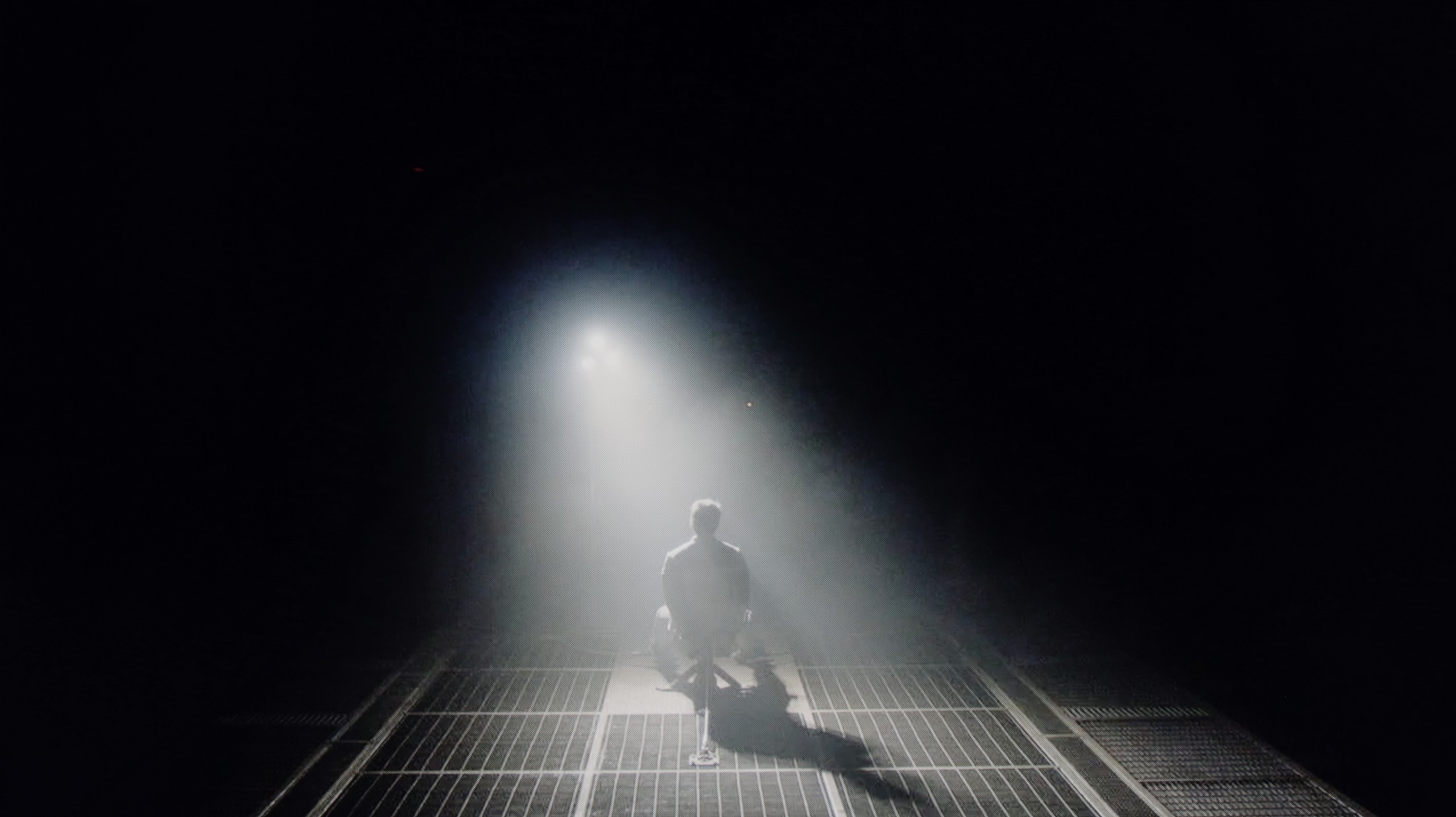
The model name 8709 “PML” refers to Philips' mini-LED technology, but can we truly call its backlighting that? In the 65-inch version, we counted only 96 local dimming zones. For mini-LED standards, this number seems too low, raising questions about whether we are indeed dealing with a full-fledged mini-LED here. However, if we look at the black quality, the TV performs quite well. On the first two test patterns and in less demanding scenes, the picture looks very decent – blacks are deep and the contrast is satisfactory. Problems begin with more complex scenes, such as the last three test patterns, where minor light elements appear on screen. The local dimming algorithm seems to “lose track,” unable to decide whether to brighten or darken a particular area. The result is noticeable errors – reduced black quality and unevenness in the image. An example of the operation of local dimming zones can be seen in a scene from the film Sicario 2. You can see how the dimming zones attempt to replicate details, but at the same time, this leads to a slight brightening around the helicopter lights. Nevertheless, despite these shortcomings, the black level in the Philips PML8709 turns out quite well, especially considering its price range.
PUS9060 is a television that in this version is equipped with a VA panel – and this is immediately visible in the contrast tests. In the tested screens, the television achieved really good results, at around 6500:1. Such a result speaks for itself, indicating that the television has really decent black levels. Unfortunately, PUS9060 is not equipped with local dimming technology, and as a result – the blacks in dark conditions can appear to resemble a shade of navy. Fortunately, the The One series is known for the famous Ambilight system, which significantly enhances perceived contrast, and consequently – "tricks" our eyes into seeing better blacks. It seems simple, but it is very useful. Therefore, we recommend using this television in the evening with this system turned on. It doesn’t necessarily have to be multicoloured, tracking the image – it can simply be white.
HDR effect quality
4/10
5.8/10
Luminance measurements in HDR:

Result
367 nit

Result
126 nit

Result
309 nit

Result
119 nit

Result
348 nit

Result
507 nit

Result
430 nit

Result
542 nit

Result
551 nit

Result
545 nit
Scene from the movie “Pan” (about 2800 nits)


Scene from the movie “Billy Lynn” (about 1100 nits)


Static HDR10


Dynamic: HDR10+
Dynamic: Dolby Vision


HDR luminance chart:
PHILPS PUS9060
Luminancja HDR
Luminance of RGB colors
Philips PML8709
Luminancja HDR
Luminance of RGB colors
Looking at the contrast results, we expected that the algorithms responsible for the zones in the Philips PML8709 would be at least decent. However, what we encountered during testing is difficult to explain. The average brightness we managed to achieve was just 350 nits, which is definitely too low to fully enjoy HDR effects. In practice, the TV barely stands out compared to an average SDR. The situation becomes even more surprising in test scenes, such as the second one from the movie Life of Pi or Sicario 2. Small light elements achieve just 120 nits there, making them practically imperceptible. Such a level of brightness is completely below modern HDR standards and significantly diminishes the experience of watching high-quality content. The only bright spot in this category is the very good coverage of wide color gamuts – DCI-P3 at 97% and BT.2020 at 83%. This ensures that colors are saturated and well-reproduced, which can somewhat improve the overall experience of watching HDR materials. However, the lack of adequate brightness means that even this cannot save the Philips PML8709 in this category.
The One is bright enough to enjoy films recorded in HDR format. The average brightness of this model is around 500 nits, so we can easily expect a pleasant viewing experience with films from streaming platforms. Of course—there's always room for improvement, because when it comes to brightness, you can never have too much for this type of content. Unfortunately, a disappointing surprise may be the coverage of the DCI-P3 colour gamut that the PUS9060 offers. Although the manufacturer boasts the use of a QLED filter here (it’s actually PFS LED), it's hard to speak of any positive effects from its operation. 85% coverage of the DCI-P3 gamut is certainly not a level to brag about in 2025—especially in a television marketed as QLED.
Factory color reproduction
3.9/10
5.5/10


Factory Mode
After calibration


Factory Mode
After calibration
Though theoretically the Filmmaker mode in the Philips PML8709 should provide natural colour reproduction, in reality it resembles a store mode more. In the white balance, both for HD and 4K content, there is a clear dominance of blue. This causes the image to appear washed out and cold, which is particularly noticeable in the comparative image below.
The brightness characteristics also leave much to be desired. Both gamma and the EOTF curve exhibit excessive screen brightness. As a result, there is a loss of detail in both the brighter and darker areas of the image, further diminishing its credibility and naturalness. Bright elements appear unnaturally flat and little varied.
These significant issues with white balance and brightness characteristics lead to noticeable errors in colour reproduction, which can easily be seen in films as well as the Colour Checker test. The colours are inaccurate, affecting the overall image quality and visual experience. The factory settings require significant improvement in order to fully enjoy the potential of this television.
We tested the PUS9060 in the best factory mode applied to it – of course, we're talking about the movie mode. Unfortunately, the best in this case does not mean good. The image in this mode was clearly yellowish and leaned towards orange tones. The white balance on this television was definitely too warm, giving the entire scene an artificial, somewhat "tanned" appearance. This directly resulted in significant colour inaccuracies, which in the worst cases exceeded a delta E value of 6 – thus, they were visible to the naked eye. The situation was reversed in HDR mode, where the image became too blue and too cool in perception. Additionally, there was a slight boost in brightness – the gamma curve and EOTF suggested that the television slightly brightens the image, which was also evident in the comparative image below.
Color reproduction after calibration
7.6/10
8/10




Philips offers advanced image calibration tools in its televisions, which we decided to fully utilise. The results? Although we managed to improve many aspects, it wasn't without difficulties. White balance was one of the biggest challenges – despite our efforts, it could be called fighting against windmills. We were able to significantly correct it, so the picture now looks much better than in the factory settings, but it is still far from perfect. Especially in some scenes, a subtle dominance of blue is visible, although not as intense as before. We achieved a significant improvement in brightness characteristics – gamma now appears much more stable. The EOTF curve looks correct at first glance, however, when analysing movie content, it is evident that the television has trouble maintaining the proper characteristics. The algorithms are "struggling", trying to adjust brightness, which may be due to the limited number of dimming zones that do not always handle more complex scenes well. Overall, the picture after calibration looks much more pleasing to the eye – colors are more natural, and colour reproduction errors have been minimised. Although it is still not perfect, the Philips PML8709 now presents itself much better than in the factory settings.
Thanks to calibration in movie mode, we managed to completely eliminate the yellow-orange tint, which significantly improved the reception of the entire scene. The image has become much more visually pleasing, though it still falls short of reference settings. It may now appear slightly bluish, but it is still a considerable improvement compared to the factory settings.
Unfortunately, we could not significantly improve the brightness characteristics, but this is more about the design of the television itself - the lack of local dimming limits the possibilities for precise brightness management. The PUS9060 simply cannot dynamically adjust luminance like more advanced models do. Nevertheless, after calibration, the overall reception is much more enjoyable, especially in film material.
Smoothness of tonal transitions
9.1/10
8.9/10












The fluidity of tonal transitions in the Philips PML8709 is at a very high level. The colour gradation is incredibly smooth, and the transitions between shades look natural and detailed. Even in more demanding scenes, the television performs excellently. Minor issues may arise with bright elements, where the gradation can be slightly less precise. However, these are such subtle differences that only the most demanding purists will notice them. For most users, the effects will be fully satisfying, and the image will maintain its impressive quality.
PHILIPS PUS9060 handles tonal transitions exceptionally well – we didn't notice any serious issues with colour blending. Gradation appears natural, without unpleasant bands or sharp transitions. We could only nitpick on the toughest, darker scenes – there, minimal imperfections appear, but overall it looks quite good, especially for this class of equipment. For most users, the effect will be more than satisfactory.
Image scaling and smoothness of tonal transitions
6.9/10
6.7/10
Smooth transition function


Image without overscan on the SD signal


The distortion reduction feature in the Philips PML8709 smooths tonal transitions, but its effectiveness leaves much to be desired. We recommend setting this option to "Medium" - at this level, the effect is noticeable but not excessive. Unfortunately, compared to other Philips models, the smoothing effect is less effective, meaning that certain tonal transitions may still appear somewhat uneven. An additional drawback is that this feature also smooths other details, such as the textures of materials like shirts, which can affect image sharpness.
As for image scaling, the television performs very well. The image appears smooth and free of noticeable "jaggies". This effect may appeal to many users, although some might prefer a more vivid look. Fortunately, the television allows for adjustment of the sharpness parameter, enabling us to tailor the image to individual preferences.
In the PUS9060, we find another version of the image processor known by Philips as P5 Perfect Picture, which aims to enhance the image – especially the imperfect ones. The TV includes a distortion reduction function, which serves to smooth tonal transitions, meaning those "colour joins" we mentioned earlier. This function does its job very effectively – there’s no strong gradation of colours, but unfortunately, it operates quite aggressively, occasionally dimming desired elements like material textures or film grain. So, it can be seen as a bit of a compromise. We wouldn’t generally recommend using this function for movies, but for more casual content – like YouTube or regular TV – it’s absolutely suitable.
The P5 processor also enhances the quality of lower resolution images, and it does this quite effectively. The test image with the model is very soft – sometimes almost too soft – but this can be easily improved with the sharpness slider, adjusting it to one’s own preferences. It’s also pleasing to see that the TV doesn’t clip the edges in SD materials – which unfortunately still happens in some TV models.
Blur and motion smoothness
5/10
7.5/10

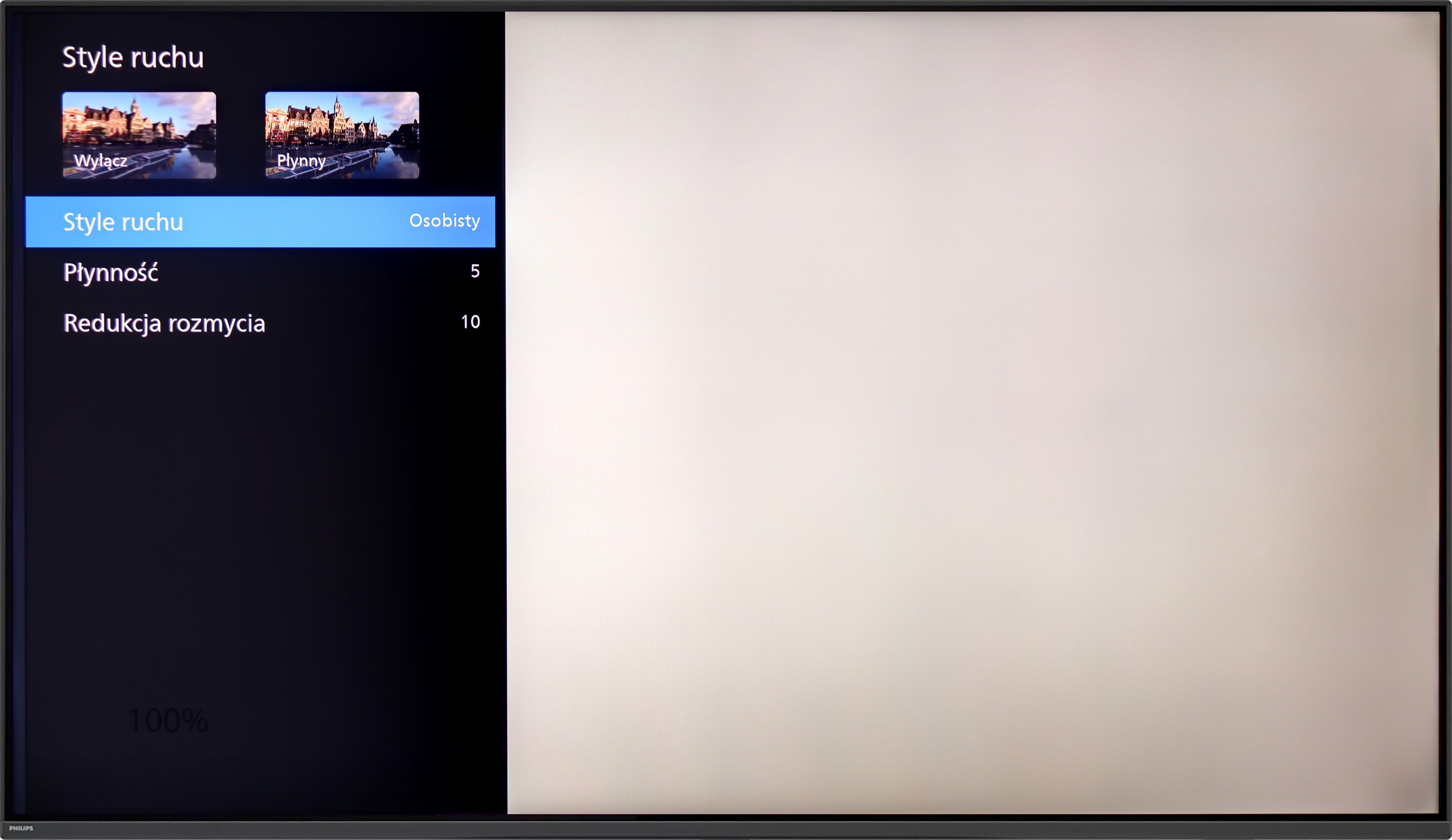
Blur (native resolution, maximum refresh rate):






Philips PML8709 is one of the few models with mini-LED technology on the market, offering a refresh rate of 60 Hz. While it’s not a panel for the most demanding gamers, it should satisfy those who mainly watch movies. The TV is equipped with a “Motion Style” feature, which is a motion smoother that allows you to adjust the fluidity of motion according to your preferences – from a more “plastic” look to a cinematic aesthetic with clearly visible frames.
PHILIPS PUS9060 is equipped with a 4K panel featuring a 144 Hz refresh rate, so we can confidently say it’s suitable for both watching sports and gaming. And indeed it is. But what about movies, which are most often recorded at 24 frames? As with most of the TVs we’ve tested with a refresh rate of 120 Hz and above, the PUS9060 offers two sliders in the motion smoothness options. The “Smoothness” slider allows you to adjust the effect in films – you can set the picture to be smoother, resembling a theatrical effect (higher settings), or more cinematic, with a slight “judder” (lower settings). Additionally, there is a feature called "Motion Blur Reduction," which limits motion blur – and this is a very useful feature, especially when watching sports.
Console compatibility and gaming features
6/10
9.8/10
- ALLM
- VRR
- VRR range48 - 60Hz48 - 144Hz
- Dolby Vision Game Mode
- Correct implementation of HGIG
- 1080p@120Hz
- 1440p@120Hz
- 4K@120Hz
- Game bar

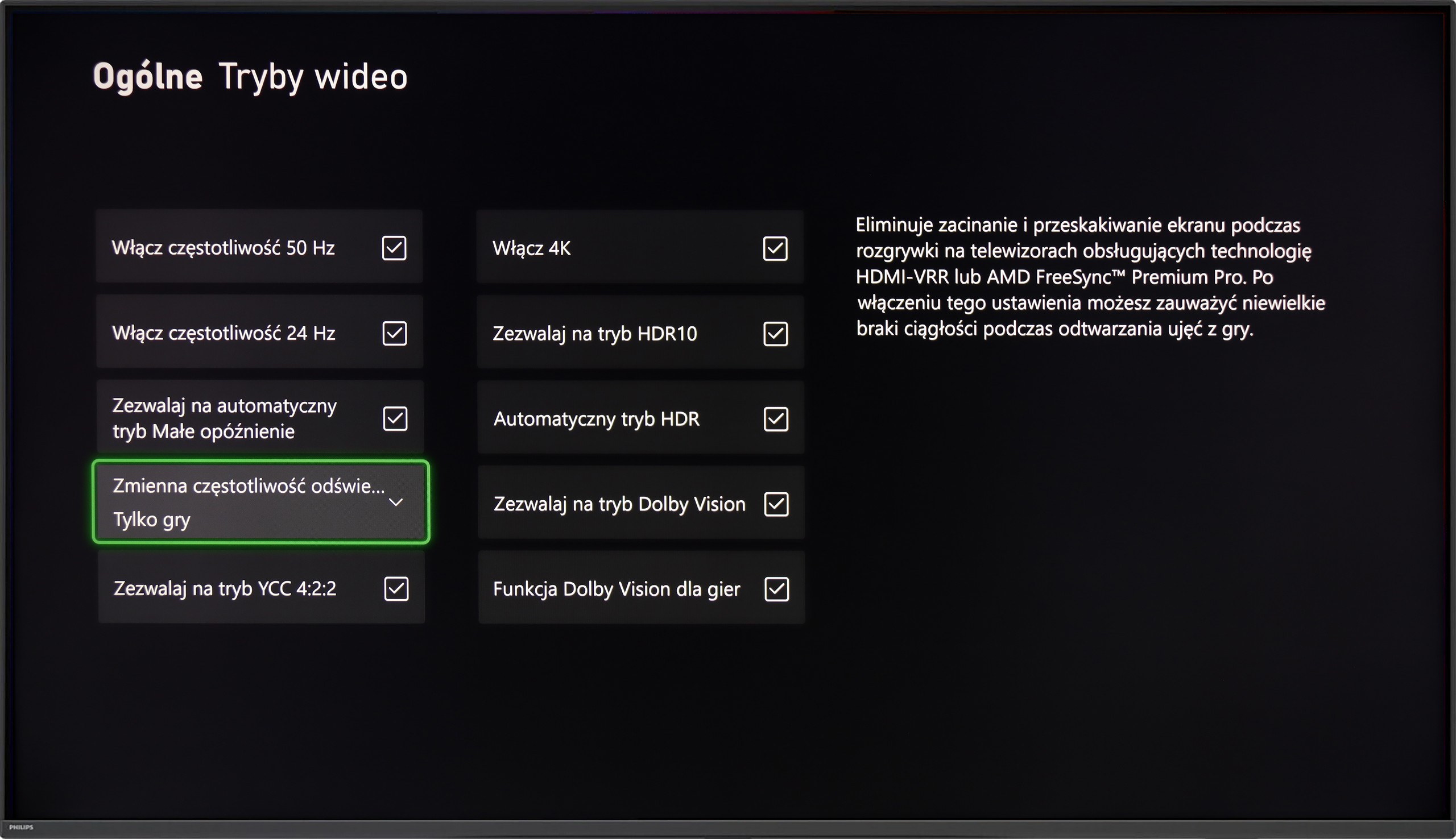



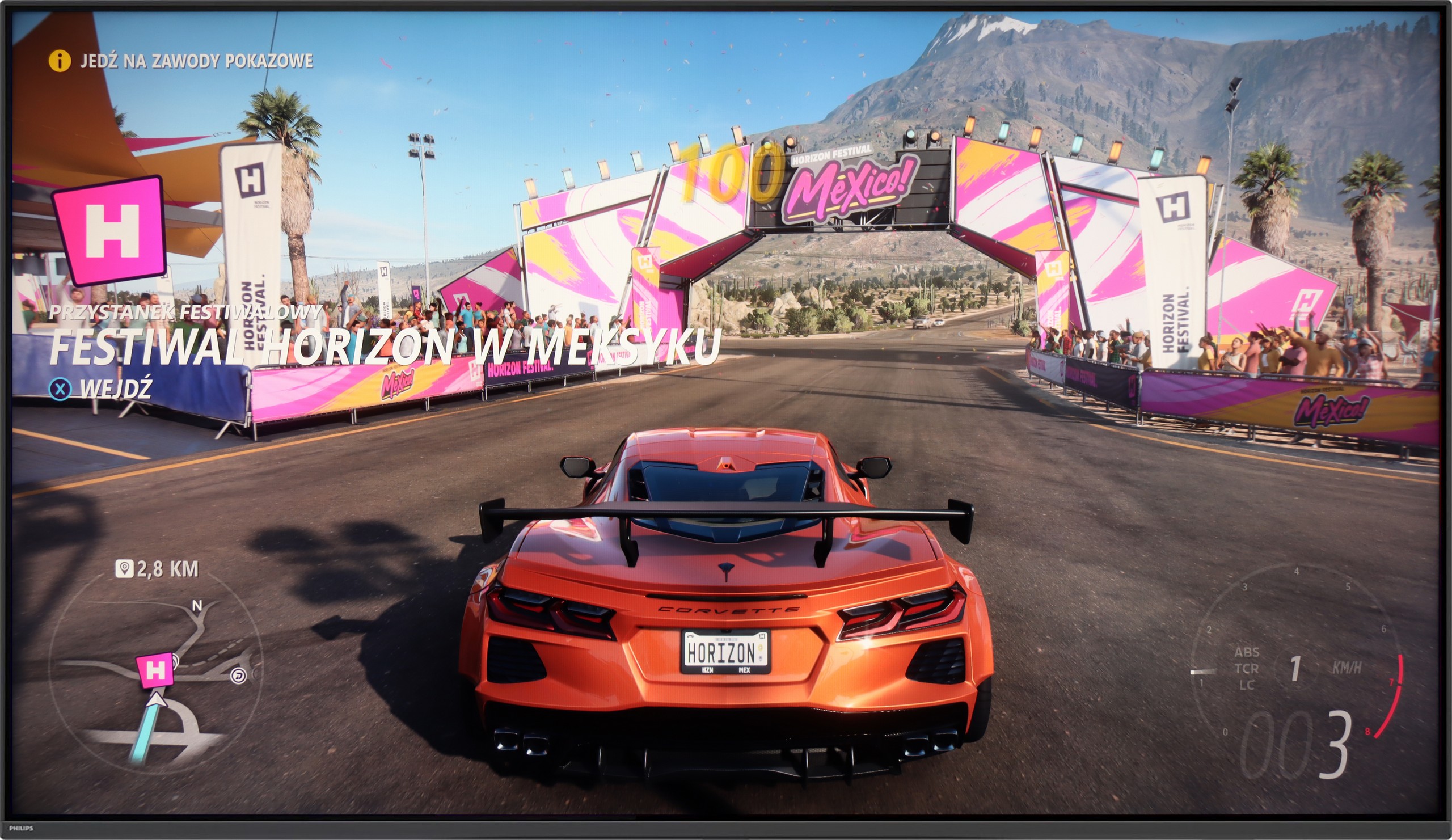

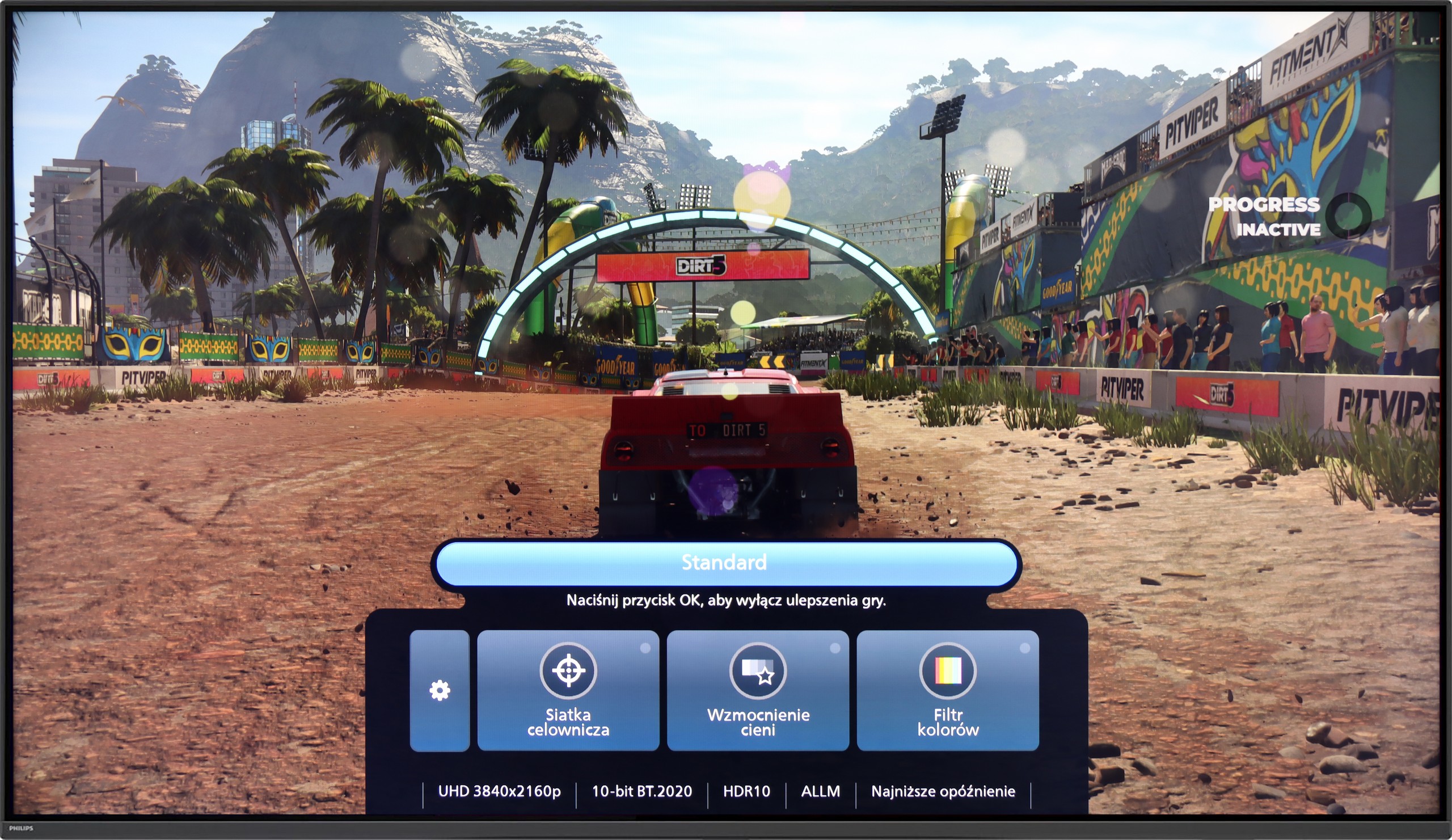
Philips PML8709 is a television aimed more at casual gamers, mainly due to the 60 Hz panel, which won’t meet the expectations of the most demanding users. However, for those who appreciate gaming at a more moderate pace, this model may prove sufficient.
The television offers several gamer-friendly features, such as ALLM (automatic switching to game mode) and VRR (variable refresh rate), which help in providing smoother image display without annoying stutters. Furthermore, in terms of HDR, we find the implementation of HGiG, which adjusts the HDR effect to the specifics of games, ensuring a more natural image in appropriately optimised titles. Unfortunately, there is no support for Dolby Vision mode, which may be noticeable in games that utilise this format.
A nice addition is the presence of a basic "Game Bar," which allows for quick previewing and modification of the most important settings related to gaming. It’s a simple but useful touch, especially for those who frequently change their configuration between different types of gameplay. Despite some limitations, the Philips PML8709 offers a solid set of features for less demanding gamers.
PHILIPS PUS9060 is a true gaming monster – it has practically everything you could expect from a modern gaming television. It features VRR, ALLM, and also includes HGiG implementation, which helps set up HDR in games as intended by the developers. The television supports every possible resolution at 120 Hz, including 1080p, 1440p, and full 4K – so regardless of whether you're playing on Xbox, PS5, or PC, everything works as it should. It also comes with a simple Game Bar, a special menu for gamers that allows you to quickly check if the ALLM mode is indeed working in low latency mode.
And of course – Ambilight TV. Let’s face it – without LEDs on the back, it’s not a true gaming rig. 😉 The multicoloured backlighting really adds to the atmosphere, especially in the evening. It may not appeal to everyone, but younger gamers will be thrilled – it just looks impressive.
Input lag
10/10
9.5/10
SDR
HDR
Dolby Vision
The Philips PML8709 performs very well in terms of input lag. With supported resolutions, results around 13 ms are more than sufficient to ensure a comfortable gaming experience. Such a reaction time means that even more dynamic games do not cause annoying delays. As a result, gamers can enjoy smooth gameplay without unnecessary stress.
The One from 2025 performs very well in terms of responsiveness. Input lag at around 9 ms at a 120 Hz signal and 18 ms at 60 Hz are values that ensure a quick and smooth response to every movement of the controller. Playing even dynamic action titles or demanding e-sports games is fully comfortable. The situation is slightly worse with Dolby Vision – here, the lag increases to around 33 ms. This is still an acceptable level for most "casual" gamers, but more demanding users may notice a slight slowdown in response. Therefore, in our opinion, a better choice would be the classic HDR10 mode with HGiG active. In this model, it has been implemented correctly and not only avoids delays but also eliminates potential issues with brightness and detail reproduction that sometimes occur in Dolby Vision.
Compatibility with PC
3.5/10
8.8/10

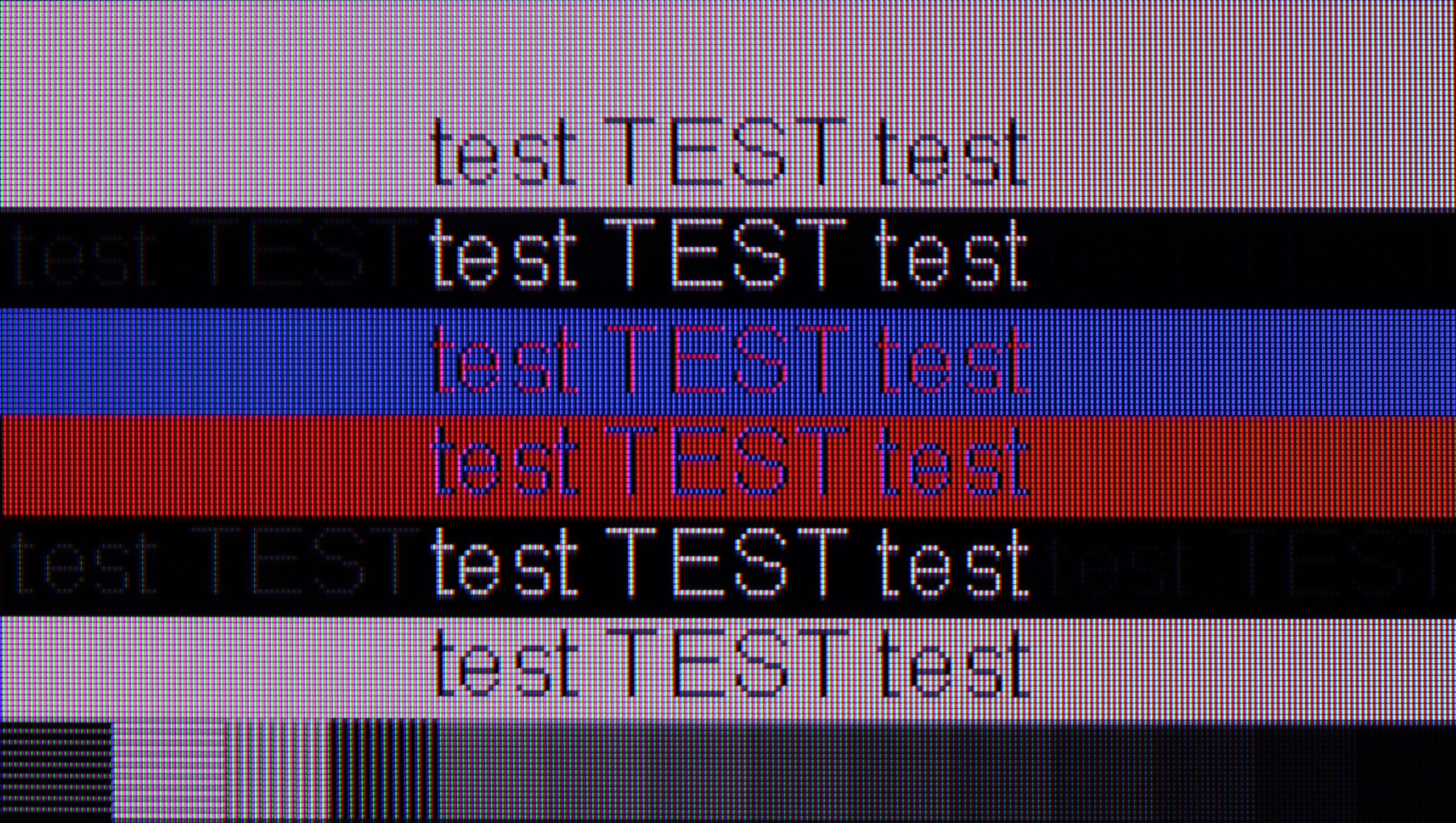
Philips PML8709 offers a dedicated mode for PC, however, its capabilities are significantly limited. The TV does not support chroma 4:4:4, which greatly affects the readability of fonts – text appears blurry and is difficult to read, which disqualifies this model for those planning to use it as a monitor for work or document viewing. Additionally, even though in G-Sync tests the TV showed compatibility, the picture when using this feature is very unstable, with frequent stutters. Such unpredictability eliminates the benefits that should come with support for adaptive sync.
The only positive aspect in the context of PC collaboration is the low input lag, which may be an advantage for those using the TV mainly for gaming. Nevertheless, the limitations in chroma support and issues with G-Sync mean that PML8709 is not the best choice for PC users.
Using a computer on the PHILIPS PUS9060 should be pure pleasure. As mentioned earlier, the TV performs excellently for gaming on a console, but it also works well in conjunction with a computer. It offers 144 Hz refresh rate, G-Sync Compatible works correctly, and it has low input lag – making it easy to consider this model as a fully-fledged PC gaming monitor.
In terms of everyday work, it’s good as well. Chroma 4:4:4 has been implemented correctly, so fonts are clear and readable. We didn’t notice any issues with text sharpness, although on very dark backgrounds, you can see a slight dimming of letters with a bit of edge doubling. In practice, however, this shouldn’t bother anyone, even while working with text.
Viewing angles
2.9/10
3.4/10
Philips PML8709, equipped with a VA panel, offers average viewing angles typical of this type of panel. The image deteriorates in quality when viewed from a greater angle – colours wash out and contrast noticeably decreases. This is a characteristic feature of VA panels and is worth keeping in mind, especially if we plan to watch the TV from different spots in the room. For viewers sitting directly in front, however, the image remains clear and well-reproduced.
The PUS9060 model is equipped with a VA panel, which – as is often the case – does not handle viewing angles very well. With a greater deviation from the axis, the screen brightness noticeably decreases and the colours lose their saturation. Unfortunately, this is a typical compromise compared to IPS panels, which offer better viewing angles but have significantly weaker contrast and blacks. Here, the situation is the opposite – blacks are good, but the angles are very average. Of course, with standard straight-on viewing, there are no issues, but in a larger lounge or with a bigger TV, where someone is sitting far to the side or we are looking at the edges of the screen, the differences will be noticeable.
TV efficiency during daytime
4.8/10
6/10

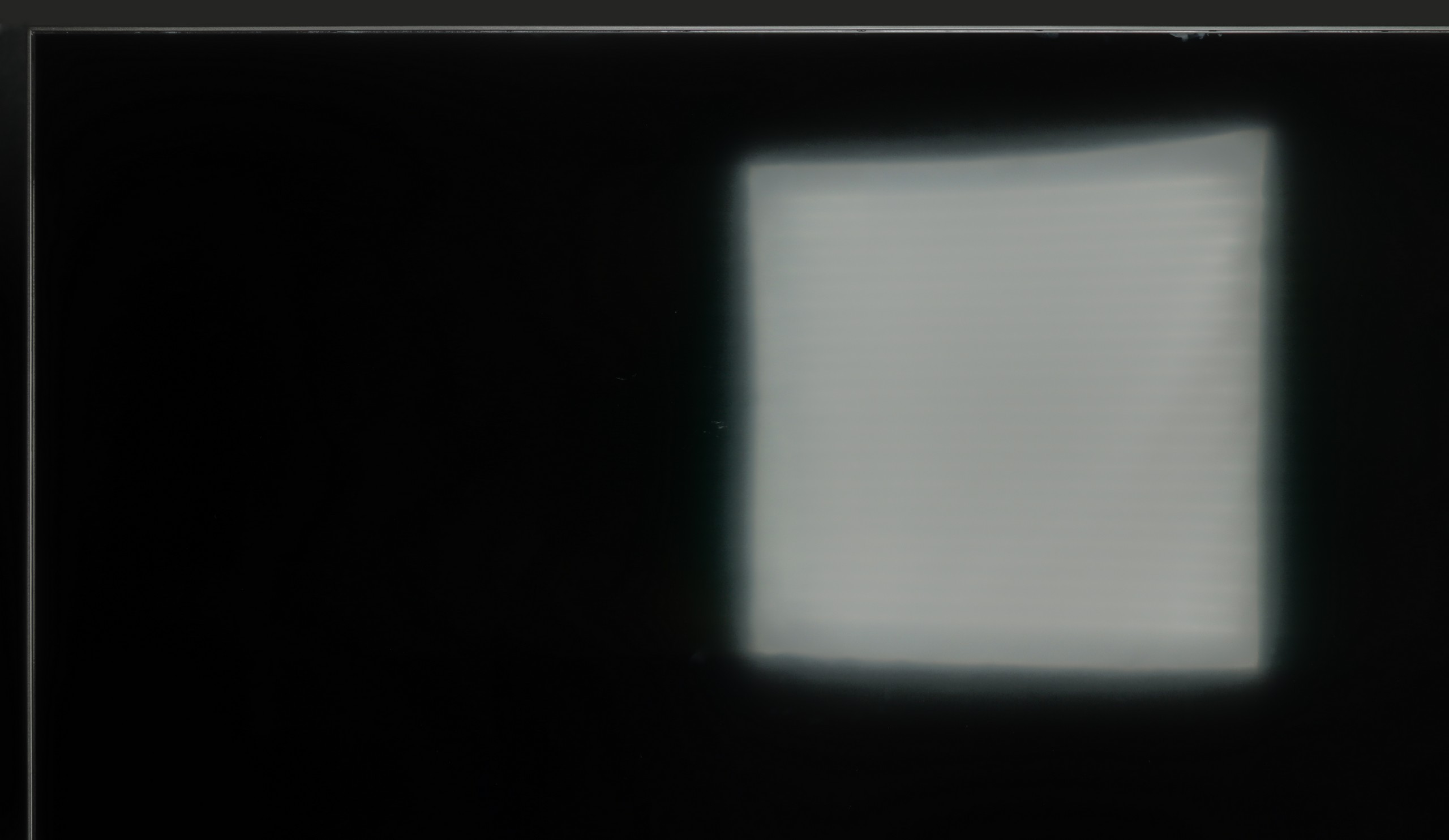


Matrix brightness
Average luminance SDR
PHILPS PUS9060: 495 cd/m2
Philips PML8709: 337 cd/m2
The Philips PML8709 is equipped with a satin matrix, which average handles glare reduction. In moderately lit rooms, reflections won't be too bothersome, however, in strongly sunlit conditions, the situation may become problematic. An additional challenge is the relatively low screen brightness, at around 330 cd/m². This level may prove insufficient for comfortable viewing in bright rooms, where the image may appear too dark and unclear. The television will perform better in controlled lighting conditions, but for those looking for a model that handles daytime viewing well, this could be a significant limitation.
Philips PUS9060 performs quite well in a bright room. The satin finish of the screen effectively reduces reflections and glare, so watching in a lounge with numerous lamps or large windows shouldn't pose too many problems. It's also a plus that the blacks don't fade excessively and the picture still maintains decent contrast. The situation could be even better if the TV offered higher brightness. About 500 nits is a decent result, but in very challenging lighting conditions, it may prove insufficient.
Details about the matrix
Subpixel Structure:

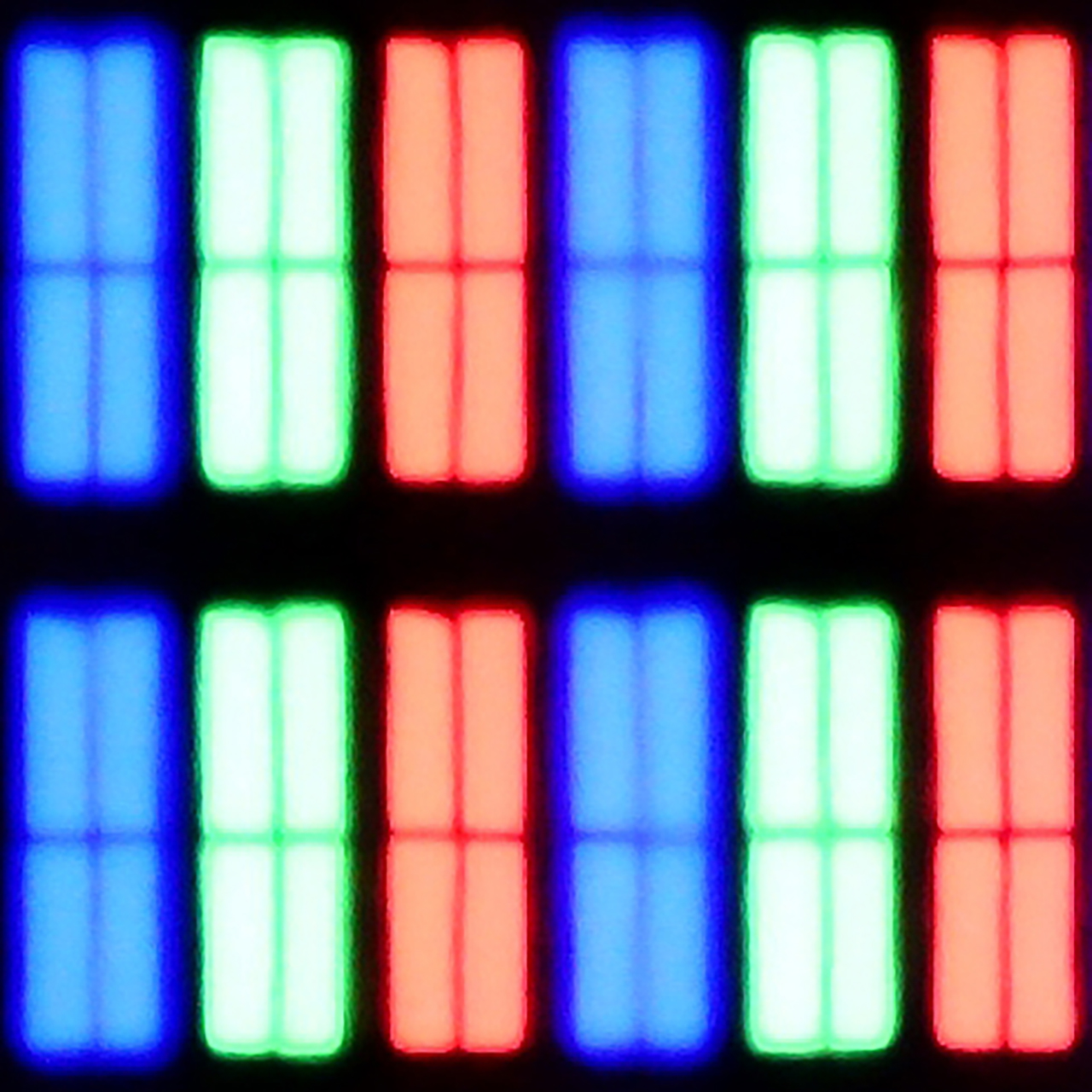
Panel uniformity:


TV features
6.5/10
5.9/10
- HDMI inputs3 x HDMI 2.0, 0 x HDMI 2.10 x HDMI 2.0, 4 x HDMI 2.1 48Gbps
- Other inputsToslink (Optical audio)
- OutputsToslink (Optical audio), eARC (HDMI), ARC (HDMI)Toslink (Optical audio), eARC (HDMI), ARC (HDMI), Mini-Jack (Headphones)
- Network InterfacesWi-Fi 2.4GHz, Wi-Fi 5GHz, Ethernet (LAN) 100MbpsWi-Fi 2.4GHz, Wi-Fi 5GHz, Ethernet (LAN) 100Mbps
- TV receptionDVB-T, DVB-T2, DVB-S, DVB-S2, DVB-CDVB-T, DVB-T2, DVB-S, DVB-S2, DVB-C
Classic features:
- Recording to USB (terrestrial TV)
- Recording programming
- Picture in Picture (PiP)
- RF remote control (no need to aim at the screen)
- Backlit remote control
- Teletext
- Audio only mode
- Possibility to connect Bluetooth headphones to the TV
- Possibility to simultaneously use Bluetooth headphones and the TV speaker
Smart features:
- AirPlay
- Screen mirroring (Windows Miracast)
- Wyszukiwanie głosowe
- Voice search in native language
- Ability to connect a keyboard and mouse


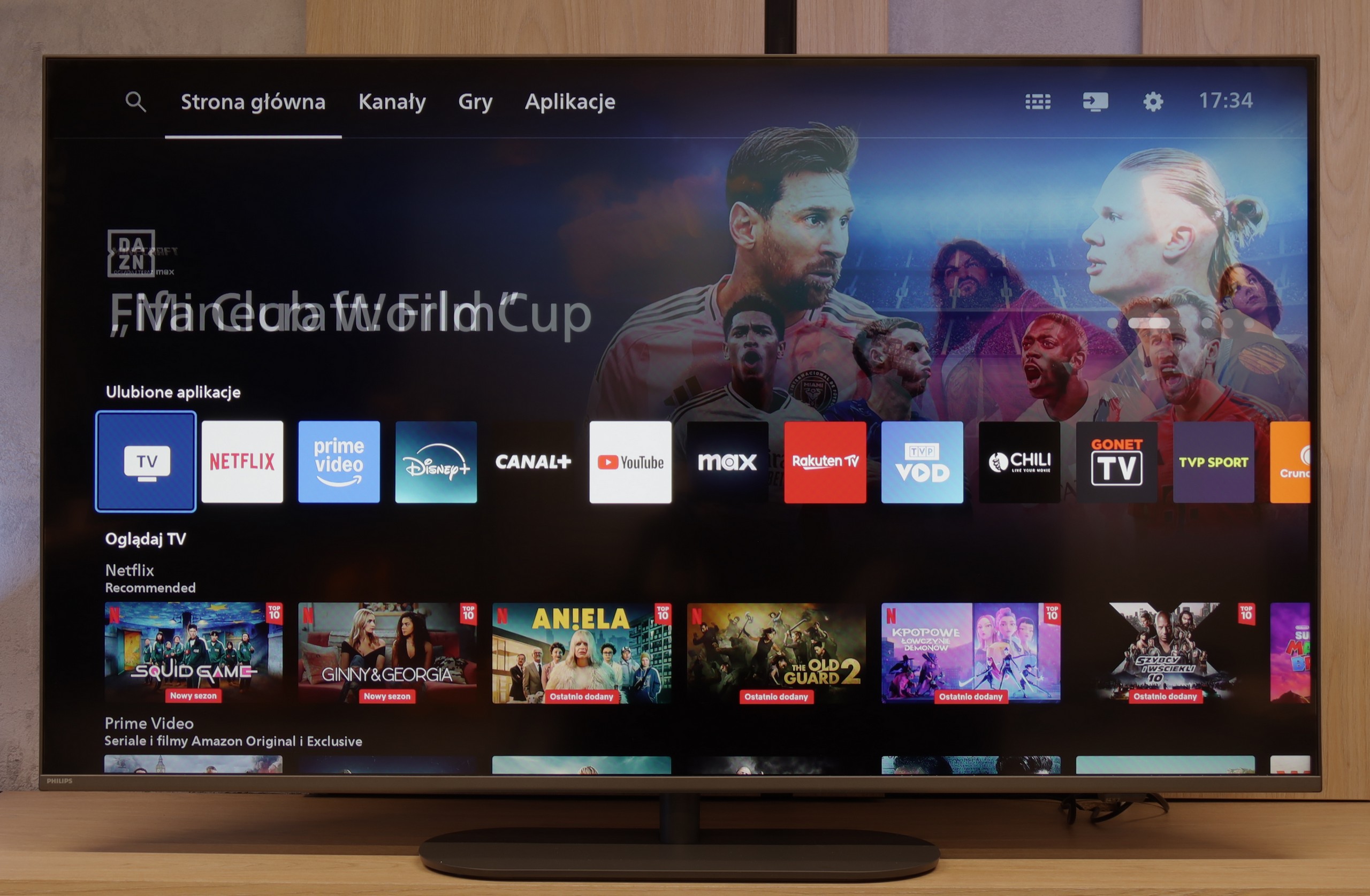
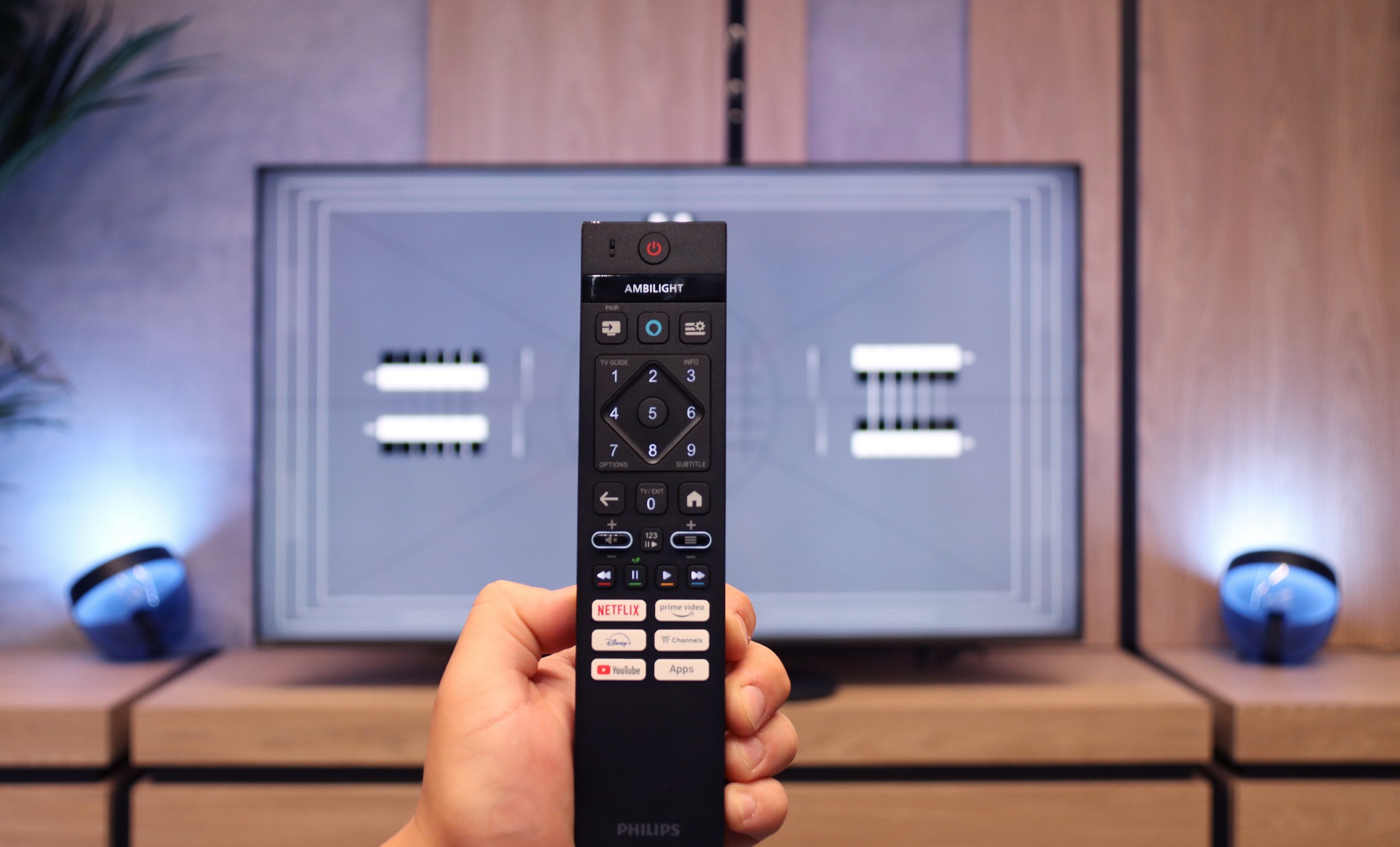


Philips PML8709 runs on the Google TV operating system. This is quite a surprising choice, considering it isn’t the flagship model of the brand. Fortunately, it has avoided the implementation of the less popular TitanOS, which can be seen as a plus. Google TV offers a well-known, clear interface and wide capabilities in terms of app installation, making the television more versatile.
In terms of user features, the television performs solidly. Daily use of the device is enjoyable thanks to support for voice search in Polish. The ability to connect peripheral devices such as keyboards, mice, or headphones via Bluetooth enhances its functionality. Unfortunately, the PML8709 does not offer more advanced options, such as USB recording or the PiP (picture-in-picture) feature, which may disappoint more demanding users.
An interesting fact, and quite a surprise, is the absence of the Ambilight system, for which Philips is commonly known. The decision to omit this technology in the PML8709 model seems puzzling, especially since Ambilight is often cited as one of the greatest strengths of televisions from this brand.
Classic features of TheOne television:
When it comes to these "classic features," the PUS9060 is quite mediocre. Of course, it has all the basics; there's EPG, teletext, and the ability to connect headphones via Bluetooth. But unfortunately, it lacks USB recording functionality, and there's no PiP (picture in picture) mode, which is becoming less common but still comes in handy. On the plus side, it has a remote with a numeric keypad - modern, backlit, which visually makes a great impression. It's just a pity that it's still a classic infrared model, so to use it, you have to aim directly at the screen. A bit disappointing, as with such a modern look, it really called for Bluetooth (RF) control.
Smart TV:
Most Philips televisions from 2025 run on the Titan OS system, which debuted relatively recently - unfortunately, this still comes with some issues. The system itself operates quite smoothly - definitely better than in cheaper Philips models - and didn't give us any problems when using features like screen mirroring or AirPlay (which isn't a given even in 2025). The biggest downside of Titan OS is still its quite average access to applications (list below). On the plus side, we can bypass this by connecting a keyboard and mouse to the television and using the built-in browser, but it's not the most comfortable solution - rather makeshift.
Playing files from USB
7.6/10
7.9/10
Supported photo formats:
Maximum photo resolution:


Philips PML8709 handles playing multimedia files from USB well. The television shouldn't have issues supporting most popular video, audio, and photo formats, making it a versatile tool for home entertainment. Files are read smoothly, and the interface of the built-in player is simple and intuitive.
However, a significant downside is the lack of support for Polish diacritics in subtitles, due to the incomplete implementation of the UTF-8 standard. Subtitles with Polish characters are displayed incorrectly, which can be frustrating for those watching films in their native language. This shortcoming means that users seeking full compatibility with subtitles may have to resort to using external media players.
The built-in player in the PUS9060 played virtually all popular audio and video formats, so it's really hard to find anything to complain about here. Movies in popular containers, music or photos – everything worked without a hitch.
The only thing that might be a bit annoying is the limited number of supported subtitle formats and the randomly selected photo resolutions that the TV can read. But apart from that, most everyday users can easily manage without the need to connect a computer or console to display their files from a USB drive.
Apps
9.6/10
6.2/10














































Sound
5.1/10
6.6/10
- Maximum volume-85dB
- Dolby Digital Plus 7.1
- Dolby True HD 7.1
- Dolby Atmos in Dolby Digital Plus (JOC)
- Dolby Atmos in Dolby True HD
- DTS:X in DTS-HD MA
- DTS-HD Master Audio
The sound quality in the Philips PML8709 is average and standard for a television equipped with speakers rated at 2 x 10 W. The audio is sufficient for everyday viewing, but it's hard to expect deep bass or clear details in more demanding scenes. On the positive side, it does support Dolby Atmos and DTS.
The sound from the PHILIPS PUS9060 was generally pleasant, although it’s hard to call it exceptional. The tested unit had built-in audio in a 2.0 configuration with a total power of 40 W, which is more than enough for everyday viewing. Fortunately, the TV supports most popular audio formats, so if someone connects a soundbar or home theatre system, they can comfortably expect full support for Dolby Atmos or DTS – without any fuss or loss of quality. For true audio enthusiasts, this is definitely good news.
Acoustic Measurements
No acoustic data
85dBC (Max)
75dBC


